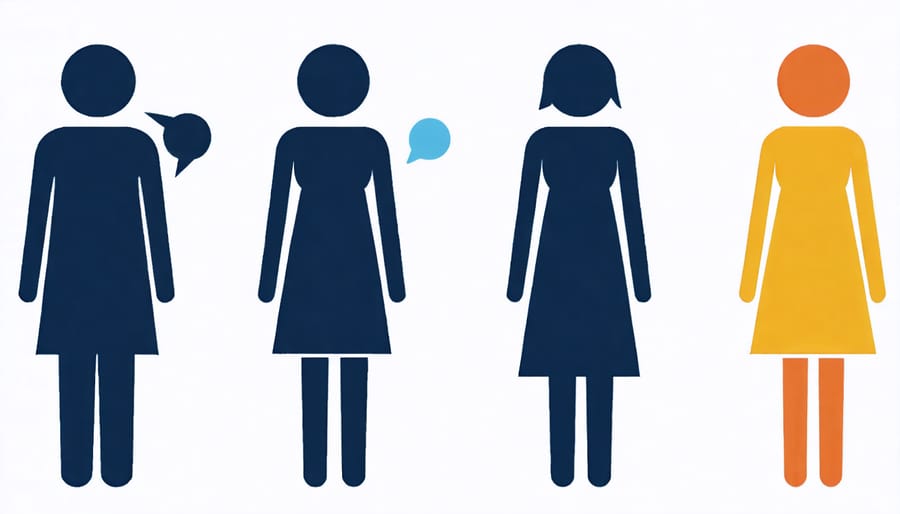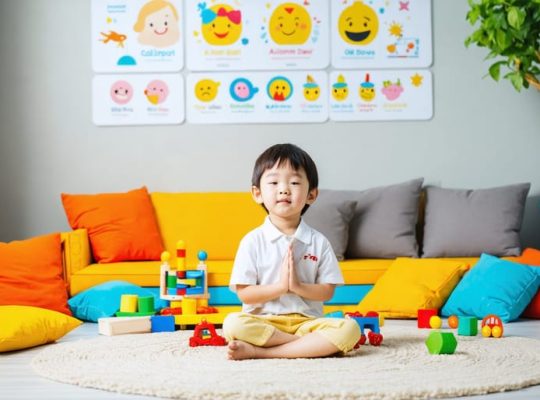Watch your baby’s face light up during those first precious smiles around 6-8 weeks – these moments mark the beginning of their remarkable emotional journey. Every coo, giggle, and shared gaze builds the foundation for your child’s lifelong capacity to form relationships and regulate emotions.
During the first year, your baby’s brain forms up to one million neural connections per second, with social and emotional experiences playing a crucial role in this development. Through daily interactions – from gentle rocking to responsive feeding – you’re not just caring for your baby; you’re literally shaping their emotional architecture.
Understanding infant socioemotional development empowers parents to create the secure attachments that children need to thrive. Research shows that babies who experience consistent, loving care during their first year develop stronger emotional resilience and social skills that benefit them throughout life.
Whether you’re a new parent, experienced caregiver, or healthcare professional, recognizing the profound impact of early emotional experiences helps us provide the nurturing environment every baby deserves. This journey of emotional connection begins from day one, and every interaction matters in building your child’s emotional foundation.
The Foundation of Emotional Bonds
Early Signs of Emotional Development
From the moment your baby enters the world, they begin their remarkable journey of early childhood development. In the first few weeks, you’ll notice your little one responding to your voice and face with subtle changes in expression. By 2-3 months, those precious first social smiles emerge, lighting up their entire face when they see you.
Around 4-6 months, babies start showing distinct emotional responses, including excitement when playing peek-a-boo and distress when separated from caregivers. They begin to laugh out loud and may show early signs of stranger anxiety. Their emotional world expands as they learn to “read” your facial expressions and respond accordingly.
Between 7-12 months, your baby’s emotional repertoire grows significantly. They develop clear preferences for familiar people, express a wider range of emotions, and begin using gestures to communicate their needs. You might notice them looking to you for reassurance in uncertain situations – a beautiful sign of developing emotional trust and security.
Watch for these heartwarming milestones, but remember that every baby develops at their own pace. Your consistent, loving presence helps build the foundation for healthy emotional growth.

The Role of Primary Caregivers
Primary caregivers play a fundamental role in shaping a baby’s emotional world, serving as their first teachers in understanding and managing feelings. Through consistent, loving interactions, parents and caregivers create a secure foundation that influences how infants learn to trust, form relationships, and regulate their emotions.
When caregivers respond sensitively to their baby’s cues – whether it’s crying, smiling, or reaching out – they help build neural pathways that support healthy emotional development. This responsive caregiving tells babies they are safe, valued, and understood. As child development expert Dr. Sarah Thompson notes, “Every soothing touch, gentle word, and attentive response helps wire your baby’s brain for emotional resilience.”
Daily routines like feeding, diaper changes, and bedtime rituals become precious opportunities for emotional connection. When caregivers maintain eye contact, use gentle tones, and respond consistently to their baby’s needs, they’re not just meeting physical needs – they’re laying the groundwork for secure attachment and emotional wellbeing.
Remember that perfection isn’t required; what matters most is being present and emotionally available. Even simple actions like mirroring your baby’s expressions or offering comfort when they’re distressed contribute significantly to their emotional growth.

Understanding Attachment Styles
Secure Attachment
Secure attachment forms when caregivers consistently respond to their baby’s needs with warmth, sensitivity, and attentiveness. When babies know they can count on their caregivers, they develop a strong foundation of trust and emotional security that benefits them throughout life.
Dr. Sarah Thompson, a child development specialist, explains: “Securely attached babies feel confident to explore their world because they trust their caregiver will be there if needed. It’s like having an emotional safety net.”
Babies with secure attachments typically show several positive behaviors. They seek comfort from their caregivers when distressed and are easily soothed by their presence. They’re generally happy to see their caregivers after separations and use them as a “secure base” from which to explore their environment.
The benefits of secure attachment extend far beyond infancy. Research shows these children often develop:
– Better emotional regulation skills
– Stronger self-confidence
– Healthier relationships with peers
– Greater resilience in facing challenges
– More positive self-image
– Enhanced problem-solving abilities
Remember, secure attachment doesn’t mean perfect parenting. What matters most is being consistently responsive and emotionally available to your baby’s needs. Small, everyday moments of loving interaction – like gentle touches, warm smiles, and attentive responses to crying – all contribute to building this vital emotional bond.
Other Attachment Patterns
While secure attachment is ideal, researchers have identified other patterns that can develop when caregiving experiences are inconsistent or challenging. These patterns often emerge as ways children adapt to their early environments, though it’s important to remember that with support and understanding, attachment styles can evolve over time.
Anxious attachment typically develops when caregiving is unpredictable. These babies might become clingy and show intense distress when separated from their caregivers, having difficulty calming down even when reunited. They may seem constantly worried about abandonment, which can lead to various developmental challenges if not addressed.
Avoidant attachment often forms when caregivers are consistently unresponsive or dismiss emotional needs. These infants might appear unusually independent, showing little distress when separated from caregivers and minimal joy upon reunion. While they may seem self-sufficient, they’re actually protecting themselves from emotional hurt.
Disorganized attachment is the most concerning pattern, usually resulting from frightening or traumatic experiences with caregivers. These babies display confused behaviors, sometimes appearing frozen or showing contradictory responses like approaching while looking away. They struggle to develop consistent strategies for managing stress and emotions.
Remember that these patterns aren’t permanent labels or predictions of future relationships. Many children show mixed patterns, and with responsive caregiving and professional support when needed, more secure attachment patterns can develop. If you’re concerned about your child’s attachment style, consider consulting with a child development specialist who can provide personalized guidance and support.
The key is maintaining patience and compassion, both for yourself as a caregiver and for your child. Understanding these patterns helps us respond more effectively to children’s emotional needs and support their healthy development.
Building Strong Emotional Connections
Responsive Parenting
Being a responsive parent means becoming fluent in your baby’s unique emotional language. Babies communicate their needs and feelings through a variety of cues – from subtle facial expressions to more obvious crying and cooing. Learning to read and respond to these signals consistently helps build a secure emotional foundation for your little one.
Watch for early signs of distress or overstimulation, such as turning away, arching the back, or becoming fussy. Responding before your baby becomes overwhelmed shows them that their feelings matter and that you’re there to help. Similarly, notice when your baby is alert and engaged – these are perfect moments for positive interaction and play.
When your baby smiles, smile back. When they coo, talk to them gently. This back-and-forth communication, known as “serve and return,” is crucial for emotional development. Even young infants can sense when you’re genuinely tuned in to their needs versus just going through the motions.
Remember that every baby is different. What soothes one might stimulate another. Take time to learn your baby’s unique preferences and patterns. Does your little one prefer gentle rocking or animated singing when upset? Do they need quiet time after social interactions?
Most importantly, be patient with yourself. Responsive parenting is a skill that develops over time. Trust your instincts, stay consistent, and remember that small, loving responses throughout the day add up to create a strong emotional bond with your baby.

Creating Safe Spaces
Creating a safe and nurturing environment is crucial for your baby’s emotional development. When infants feel secure in their surroundings, they’re better equipped to explore, learn, and form healthy attachments. Start by establishing consistent daily routines for feeding, napping, and playtime – this predictability helps babies feel safe and know what to expect.
Consider setting up a designated comfort corner in your home where your baby can feel peaceful and protected. This space should be free from loud noises, harsh lighting, and potential hazards. Soft textures, gentle colors, and familiar objects like favorite toys or blankets can help create a soothing atmosphere.
Dr. Sarah Chen, a child development specialist, suggests, “Think of safe spaces as emotional anchors for your baby. When they have reliable places to return to, they develop a stronger sense of security and confidence.”
Maintaining a calm and responsive caregiving approach is equally important. When your baby is distressed, respond consistently with gentle words and actions. This doesn’t mean rushing to pick them up at every sound, but rather being present and attentive to their needs.
Remember to create emotional safety through your presence as well. Your facial expressions, voice tone, and body language communicate security to your baby. When you remain calm during challenging moments, you help your little one develop their own emotional regulation skills.
Supporting Emotional Growth
Supporting your baby’s emotional growth involves creating a nurturing environment filled with responsive interactions and consistent care. When you respond promptly to your infant’s cries and cues, you’re teaching them that their feelings matter and that they can trust you to meet their emotional support needs.
Simple daily activities can significantly boost emotional development. Make eye contact and smile during feeding times, sing gentle lullabies, and engage in playful face-to-face interactions. These moments help your baby learn to recognize and respond to different emotional expressions while strengthening your bond.
Physical touch is equally important – gentle massage, skin-to-skin contact, and warm hugs provide comfort and security. Create predictable routines around feeding, sleeping, and playtime to help your baby feel safe and understood.
Remember to narrate your activities and label emotions, even with very young infants. Saying things like “You’re feeling sad right now” or “That made you happy!” helps them begin to understand and process their emotions. When your baby experiences difficult feelings, stay calm and present, offering gentle reassurance through your voice and touch.
Celebrate your baby’s emotional milestones, like their first social smile or when they reach for you when upset. These moments show their growing emotional awareness and trust in your relationship.
When to Seek Support
While most babies develop their emotional bonds naturally, there are times when parents might need to seek professional guidance. It’s important to remember that every child develops at their own pace, and some variations are completely normal. However, certain signs may warrant a conversation with your pediatrician or child development specialist.
Watch for persistent difficulties in social interaction, such as:
– Limited or absent eye contact by 3 months
– No social smiling by 2 months
– Not responding to familiar voices or faces by 4 months
– Showing no interest in interactive games like peek-a-boo by 6 months
– Rarely making sounds or facial expressions to communicate by 9 months
Some babies may also show signs of attachment difficulties, including:
– Extreme difficulty being comforted when distressed
– Unusual resistance to being held or touched
– Consistent withdrawal from social interactions
– Little or no reaction when caregivers leave or return
– Excessive crying without apparent cause
Keep in mind that some of these behaviors might be related to neurodevelopmental differences that benefit from early intervention. Trust your parental instincts – if something doesn’t feel right, it’s always better to seek professional advice early rather than wait.
Remember that seeking support isn’t a sign of failure but rather a demonstration of responsible parenting. Many resources are available, including:
– Your child’s pediatrician
– Early intervention programs
– Child development specialists
– Family therapists
– Parent support groups
Early support can make a significant difference in your child’s emotional development and your family’s well-being.
Throughout your infant’s early development, you’re laying the groundwork for a lifetime of emotional well-being and healthy relationships. Remember that every smile, gentle touch, and responsive interaction helps build your baby’s sense of security and trust in the world around them.
As we’ve explored, secure attachment doesn’t require perfection – it’s about being “good enough” and consistently available to meet your baby’s emotional needs. Even on challenging days, your presence and attunement make a profound difference in your child’s socioemotional development.
Trust your parental instincts while staying informed about developmental milestones and best practices. Every baby is unique, and you know your child best. Continue responding sensitively to their cues, maintaining those precious moments of connection, and celebrating small victories in your attachment journey.
Remember that seeking support when needed is a sign of strength, not weakness. Whether from family, friends, or professionals, building a support network helps you maintain the emotional energy to nurture your growing baby.
Keep nurturing that beautiful bond – you’re doing important work that will benefit your child throughout their life.



